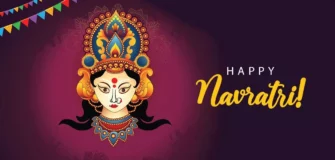NCERT EVS Book Features First Indian ISS Astronaut
Share

As the National Council of Educational Research and Training (NCERT) unveils its newly launched Class 5 Environmental Studies (EVS) textbook, Our Wondrous World, India’s educational scene is changing quite a bit. Part of The World Around Us (TWAU) series, this book is evidence of the instructional innovations envisaged in the National Education Policy (NEP) 2020. Designed for inquiry-based and experiential learning, the book brings science, social science, and environmental studies together in a fluid, story-driven style intended to inspire interest and environmental awareness in young pupils, rich with interdisciplinary material.
The inclusion of a deep and inspiring quote by Group Captain Shubhanshu Shukla, who made history as the first Indian to reach the International Space Station (ISS), has drawn great admiration and attention. Marking the first Indian presence aboard the ISS in over four decades, his 18-day space mission finished on July 15, 2025. In the chapter Earth, Our Shared Home, the textbook presents his astounding thoughts in which he depicts the Earth as a borderless, one body from the vantage point of space. Shukla said, “The Earth looks whole; no border is visible from outside,” during a discussion with Prime Minister Narendra Modi. He went on to express a potent message of shared responsibility and unity: “It appears no border exists, no state exists, no nation exists. The Earth is our one home, and we all belong to mankind; all of us are in it.
Located at the center of a school textbook, this message reflects a brave and forward-looking effort to mold young minds to go beyond geographic borders and develop an early global, ecologically aware viewpoint. At a time when such principles are most desperately needed, it aims to instill in children the seeds of unity, stewardship, and humanity.
Consistent with the vision of NEP 2020, Our Wondrous World is about engagement, discovery, and relevance—not only content delivery. Real-world inventions including DIGIPIN, a 10-character digital address system developed for exact geolocation in India, are included in the book. Exposing kids to DIGIPIN highlights how technology and science permeate everyday life and have civic value. It successfully links book study with practical application in real-life situations.
Additionally, the textbook begins a thrilling exploration throughout the environments, civilizations, and terrain of India. The route of the Godavari River is one of the first chapters, which lets kids investigate ecological and geographic features like the Brahmagiri Hills and the Coringa Wildlife Sanctuary. The chapter also covers key conservation projects including the Namami Gange Programme and imparts basic survival skills including flood safety advice.
Expanding on the realistic and scientific base, another chapter looks at the world of microbes, making difficult ideas understandable by guiding youngsters through food preservation techniques like pickling, drying, and refrigeration. Essential health issues like oral hygiene and emergency reactions—including how to respond to choking—information that could be life-saving—is combined with this.
Another strong point of the book is cultural education. Students learn about India’s national symbols, local dances, traditional clothing, and historic sites in the chapter Our Energetic Nation. Children learn about the richness of India’s legacy in a fun yet purposeful way via an interactive activity based on decoding cultural elements hidden in currency notes.
Offering a travelogue-like adventure, the chapter titled Some Special Sites transports students to the Sundarbans, Majuli Island, and the environmentally aware Hiware Bazar village. By these stories, they discover indigenous customs, initiatives for sustainability, and regional biodiversity. In addition to introducing them to indigenous inventions and cultural riches like Bhut Jolokia chilies from Assam, coir crafts from Kerala, and Maharashtra’s old Kailashnatha temple.
National heroes like Dr. APJ Abdul Kalam, Bhagat Singh, Rani Lakshmibai, and Chhatrapati Shivaji are interwoven across the book. These stories help to motivate patriotism, bravery, resilience, and direction. The book shapes personality rather than just imparts knowledge.
Furthermore, the learning methodology is remarkably active. Activities like journal writing, interviews, model-making, experiments, and nature walks are promoted by the book. Encouraged to notice their surroundings, ask questions, make predictions, and come to their own conclusions—building the groundwork for critical and scientific thought. Throughout the text, reinforced by side notes, trivia, and images that make learning more interesting and comprehensive, thematic threads including biodiversity, the cycle of seasons, and human-nature connections run.
Our Amazing World is a step ahead in educational content for primary school pupils in every respect. Into a single, coherent tale it incorporates cultural pride, technological awareness, environmental ethics, scientific inquiry, and space exploration. The textbook captures the hopes of a country rooted in tradition but aggressively forward-looking by emphasizing people like Group Captain Shubhanshu Shukla and fusing historical and modern Indian advancements.








